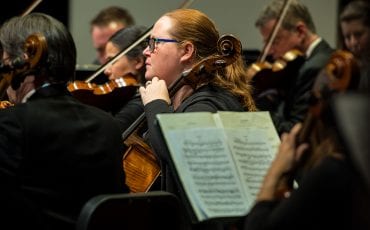A Therapy Primer

A look at therapies, from physical therapy to play therapy.
Table of Contents
Occupational Therapy (OT)
What: Focuses on helping children of all ages cope with emotional, social and physical difficulties.
Treatment: OT treatment varies widely depending on a child’s physical, emotional and social needs. For instance, a treatment program for children who have trouble sitting still in school, tying their shoes and dressing themselves may involve an obstacle course that helps improve hand-eye coordination.
To Learn More: American Occupational Therapy Association, aota.org
Physical Therapy (PT)
What: Through the use of exercises and physical activities, PT manages and improves patients’ physical limitations and helps them return and/or achieve the highest level of function possible.
Treatment: Children typically meet with a physical therapist once or twice a week for 45 to 60 minutes. Therapy sessions may include mobility training, activities designed to boost gross motor coordination, ambulation training (activities that help with children’s walking skills), balance training and wound care. Physical therapists also can help parents choose the appropriate wheelchair, walker or orthotics for their child, if needed.
To Learn More: American Physical Therapy Association, apta.org
Speech Therapy
What: Any form of therapy that assists children who are experiencing difficulties with communication, language skills and social interaction. Specially trained therapists often are part of a team that provides feeding therapy to help children with feeding and swallowing difficulties (also called dysphagia).
Treatment: Speech-language pathologists generally work with children for 30 to 60 minutes once or twice a week. Treatment may incorporate reading, recognition games and other activities designed to advance communication skills.
To Learn More: American Speech-Language-Hearing Association, asha.org
Play Therapy
What: A form of counseling that draws on the curative powers of play to help children with various problems.
Treatment: Play therapists use toys and activities to help children communicate. Sessions are typically 30 to 50 minutes and are held weekly. Research suggests that it takes an average of 20 play therapy sessions to resolve the problems of the typical child referred for treatment.
To Learn More: Association for Play Therapy, a4pt.org
Hippotherapy
What: Hippotherapy means “treatment with the help of the horse” (the Greek word “hippos” translates to horse). Specially trained physical and occupational therapists use the rhythmic movement of the horse – which surprisingly mimics the human movement patterns of the pelvis when walking – as a tool or strategy to improve neuromuscular function.
Treatment: During a typical session, a child spends time on horseback, supported by walkers alongside the horse. The horse’s gait is modified by a horse handler and therapist, who monitors the child’s response during the session as well as the impact of sensory input. Unlike therapeutic horseback riding where children learn equestrian skills and how to care for a horse, hippotherapy focuses on improving neurological function and sensory processing through the horse’s movement.
To Learn More: PATH International, pathintl.org or American Hippotherapy Association, americanhippotherapyassociation.org
Music Therapy
What: A creative therapy that uses music and music activities to address an individual’s physical, emotional, cognitive and/or social needs.
Treatment: The format and the type of music selected for a session is based on the individual client’s treatment plan. Treatment sessions are generally held once or twice a week for 30 to 60 minutes and may include music improvisation, singing, instrument play, movement, receptive music listening, song writing, lyric discussion and music performance.
To Learn More: American Music Therapy Association, musictherapy.org
Dance Therapy
What: A creative therapy that uses choreographed or improvised movement to promote healing.
Treatment: For children, treatment often takes place in a group setting and lasts about an hour. Treatment sessions may include a broad spectrum of approaches, such as expressive movement, creative dance, role-playing and a blend of structured and improvised movement experiences.
To Learn More: American Dance Therapy Association, adta.org
Aquatic Therapy
What: Also known as hydrotherapy, this discipline uses the unique physical properties of water to facilitate rehabilitation.
Treatment: Aquatic therapy usually is conducted in conjunction with physical and/or occupational therapy and sometimes speech therapy. Sessions generally take place in a warm therapeutic pool and last about an hour.
To Learn More: Academy of Aquatic Physical Therapy, aquaticpt.org
-Kate Wicker







